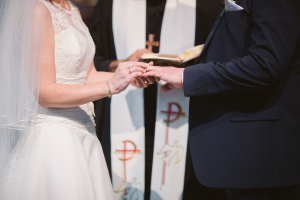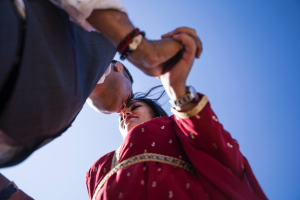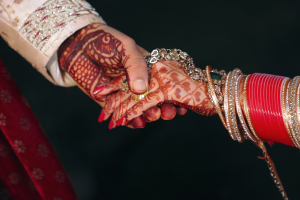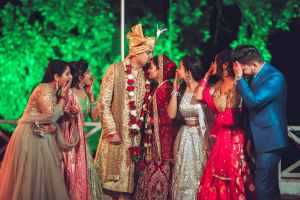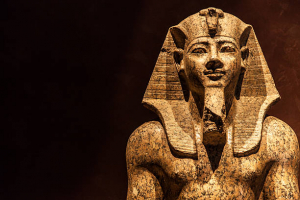Top 10 Interesting Facts about Kannada Wedding
Kannada weddings, which are rooted in custom and culture, provide a fascinating insight into the rich history of Karnataka, a southern Indian state. In this ... read more...article, we will explore some fascinating facts about this event.
-
In Kannada weddings, the Nischay Tamulam ceremony is a pre-wedding tradition that holds profound cultural and symbolic significance. At the heart of the Nischay Tamulam ceremony lies the beautiful exchange of betel leaves and betel nuts between the parents of the bride and groom. The act of exchange not only signifies the parents' endorsement of the union but also marks the beginning of the ceremonial proceedings.
The exchange of gifts between the families is another captivating facet of the Nischay Tamulam ceremony. The parents of the groom extend their warmest regards to the bride by presenting her with a stunning saree and a matching blouse. Alongside these garments, a coconut and a selection of delectable sweets are offered, imbued with well-wishes and the promise of a sweet life together. In turn, the bride's parents shower their blessings upon the groom by gifting him a dhoti, a coconut, an assortment of fruits, and many sweets.
One of the most significant aspects of the Nischay Tamulam ceremony is the role of the priest, who plays a pivotal part in determining the auspicious date for the forthcoming wedding. The priest's guidance ensures that the union takes place at an opportune time, thereby setting the stage for the subsequent wedding preparations.
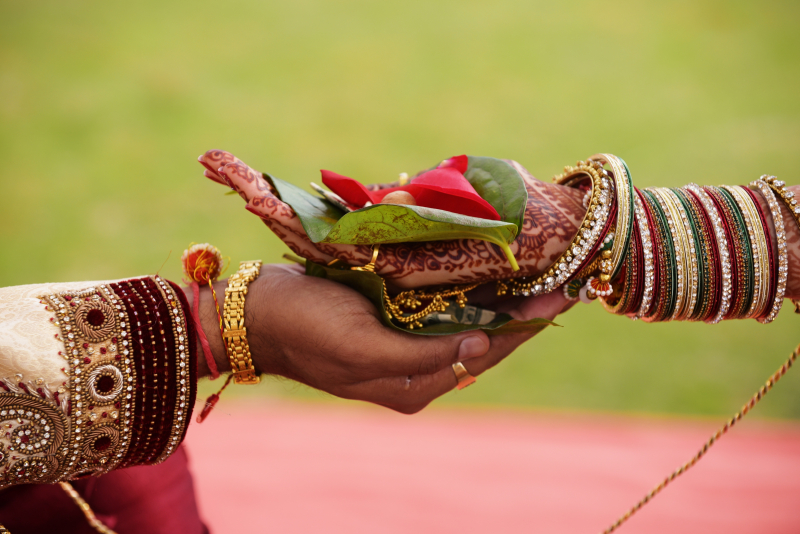
Photo by AMISH THAKKAR on Unsplash 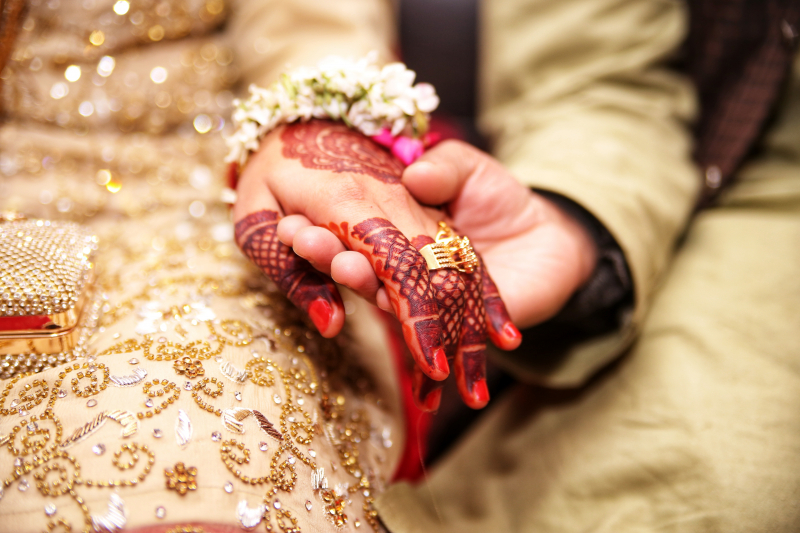
Photo by Khadija Yousaf on Unsplash -
In Kannadiga marriages, the Naandi rite has significant spiritual and symbolic meaning. A copper pot holding holy water, which stands in for the divine nectar of Amrit, and a coconut, which stands for purity and blessings, are the focal points of this ritual. It marks the start of the wedding ceremonies in full swing when these items are brought inside the house, frequently in a dedicated location for worship.
Naandi acts as a sincere confession to the gods. The goal is to make sure that there are no delays or problems during the wedding ceremony. The pair will also receive eternal rewards. Invoked at this ceremony, wealth, plenty, health, and knowledge are thought to be brought into the life of the newlyweds. It is a touching way for the community to express its wishes for the couple's success as they begin this important journey together.
The tradition of presenting the first wedding invitation card to the all-powerful during Naandi is a fascinating aspect of the festival. The invitation is first sent to the divine in order to obtain their blessings for the occasion and for everyone who will be there before it is given to friends and family. This tradition strengthens the wedding's spiritual underpinnings and brings heavenly grace and presence into every facet of the festivities.

Photo by Kadir Celep on Unsplash 
Photo by Maria Orlova on Pexels -
The Kaashi Yaatre ritual is a delightful pre-wedding tradition in Kannada weddings. The name itself, "Kaashi Yaatre," reflects the groom's comical pretense of departing for the sacred city of Kaashi (Varanasi) in pursuit of a suitable bride. It is a playful moment that unfolds with the groom attired in a traditional dhoti, carrying a walking stick, an umbrella, a fan, and a collection of edibles such as rice, coconut, and dry fruits.
During Kaashi Yaatre ritual, the groom pretends to leave as the wedding is taking place, acting mock-angry and frustrated because no one in his family has been able to locate him as a suitable wife. His dramatic announcement that he is going to embark on a journey to Kaashi gives the situation a dramatic air. The groom represents a voyage of solitude and meditation in this impassioned performance, intended to mock and amuse his family.
However, just as the groom is about to leave, his maternal uncle abruptly steps in and offers a glimpse of hope. The uncle announces the selected bride with excitement, catching the groom's eye and winning his heart. Upon seeing the stunning bride-to-be, the groom's pretending anger fades away, giving way to relief and delight. This dramatic discovery is a moving moment.
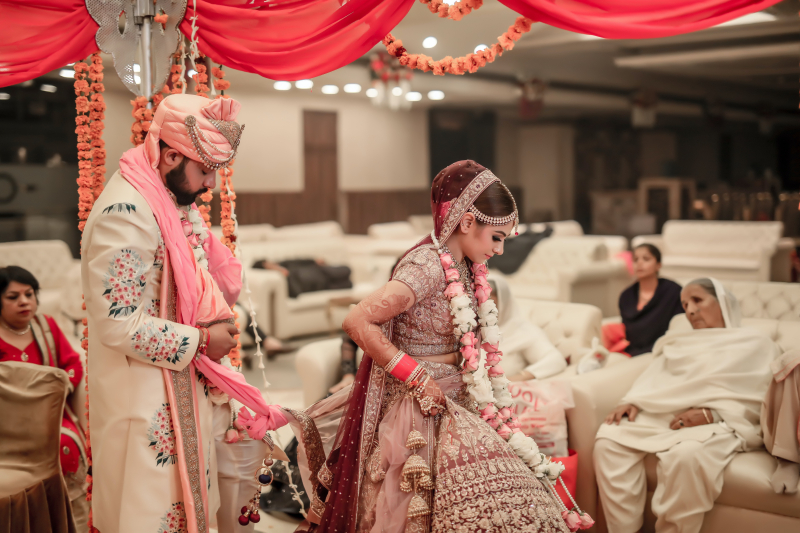
Photo by Alok Verma on Unsplash 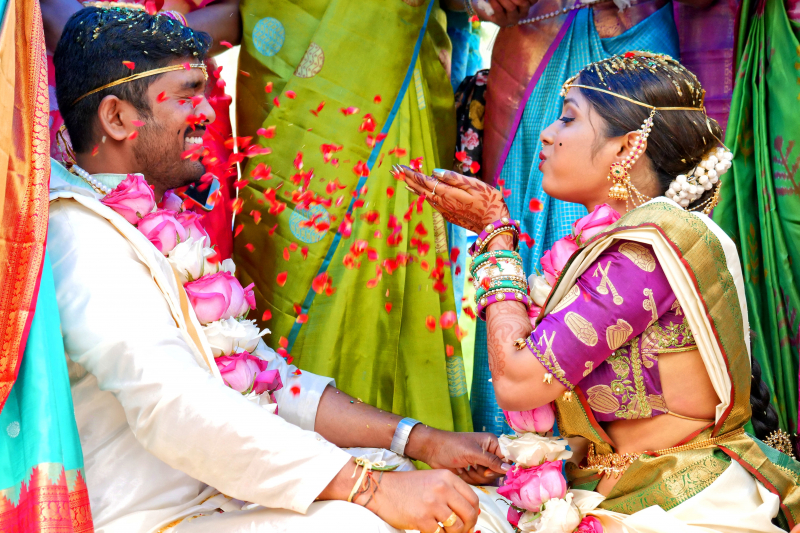
Photo by AMISH THAKKAR on Unsplash -
Mandap Puja, in essence, is the ritual purification of the wedding space. This sacred ceremony takes place before the wedding rituals are initiated, and its primary purpose is to cleanse the mandap and the entire venue of any negative energies, ensuring that the atmosphere is filled with positive and auspicious vibrations.
The rituals involved in Mandap Puja are both meticulous and symbolic. The priest, adorned in traditional attire, starts by offering prayers and incantations to invoke divine blessings. He then proceeds to purify the mandap by sprinkling holy water on the ground and drawing sacred geometric patterns known as rangoli or kolam with rice flour. These patterns, rich in symbolism, are believed to attract positive energies and ward off negativity.
The rituals and prayers performed by the priest are intended to invoke divine presence and blessings upon the couple, their families, and the entire congregation. The mandap, being the focal point of the wedding, holds immense importance. It is here that the couple will exchange vows, perform sacred rites, and seek the blessings of the divine. The Mandap Puja ensures that this area is not just a physical building but also a sacred and spiritually charged setting where the wedding ceremonies may be performed in its full majesty.

Photo by Harshil Gudka on Unsplash 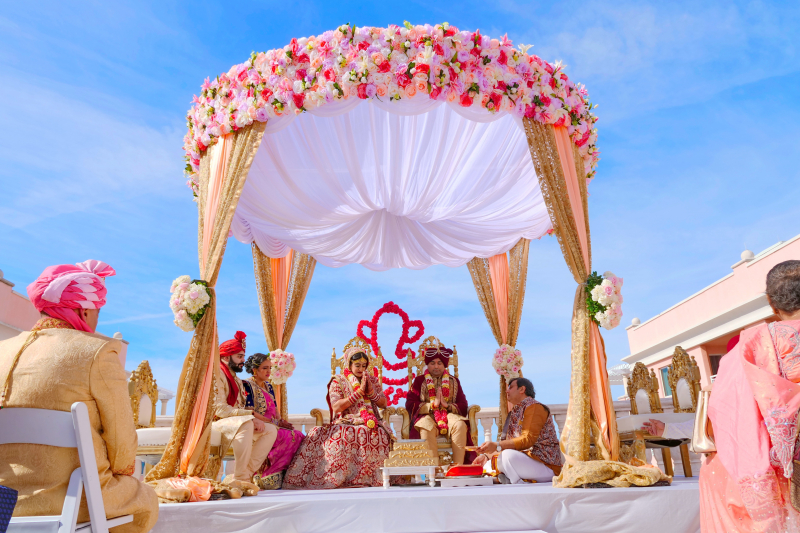
Photo by AMISH THAKKAR on Unsplash -
Central to Kannada wedding traditions is the belief that the groom is an embodiment of Lord Vishnu, one of the principal deities in Hinduism. This spiritual perspective bestows a divine aura upon the groom and elevates his role in the wedding ceremony. It is this sacred belief that underpins the custom of groom worship.
In this ritual, the bride's father plays a central role. He leads the groom from the entrance of the wedding venue to the mandap, the sacred altar where the wedding ceremony unfolds. The bride is already seated on the mandap, waiting to unite her life with the groom's. Upon reaching the mandap, the bride's father washes the groom's feet, a ritual known as "pada-puja." This act signifies the groom's purification and sanctification as he prepares to embark on the sacred journey of marriage.
Following the pada-puja, the bride's father bestows a gift upon the groom, known as "pitambar." This gift typically consists of a silk dhoti and a scarf. The dhoti is a traditional Indian garment, while the scarf, or "uttariya," adds a touch of elegance to the groom's attire. With the transformation complete, the groom takes his place next to the bride on the mandap. He is now fully prepared to participate in the sacred wedding rituals that will unite the two souls in matrimony.
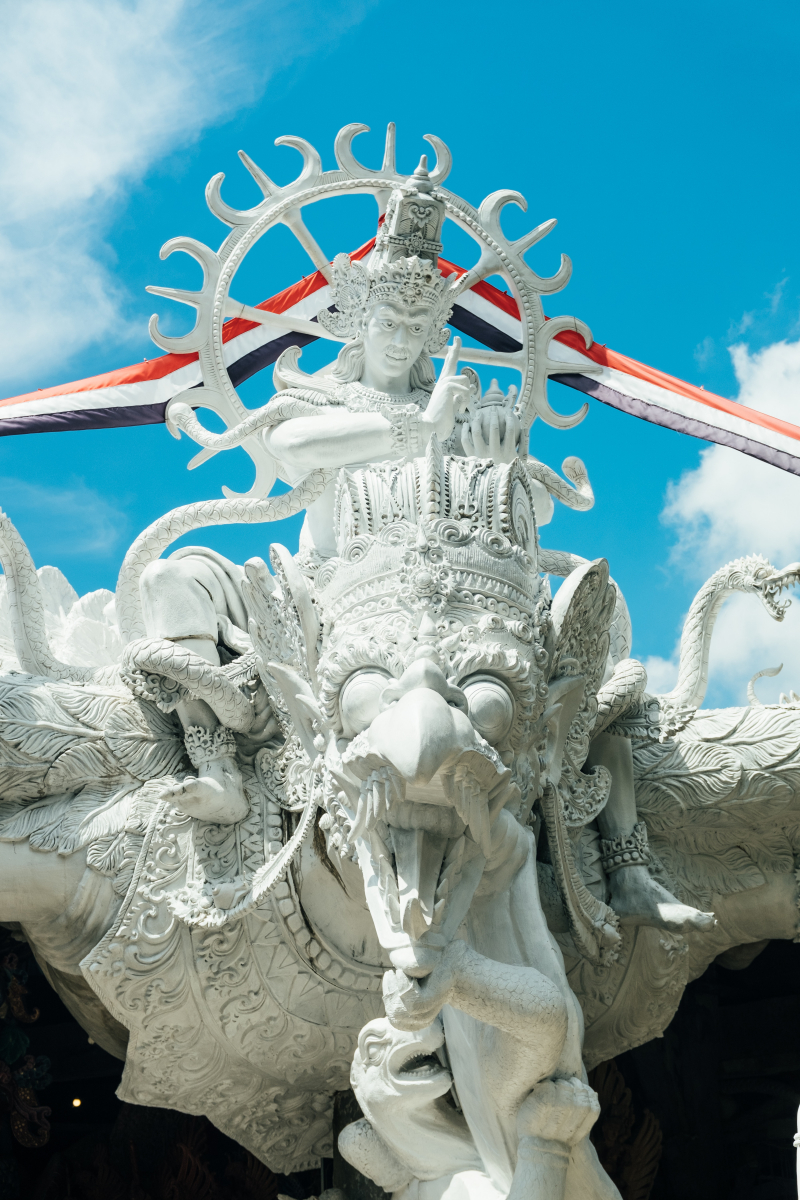
Photo by Bernard Hermant on Unsplash 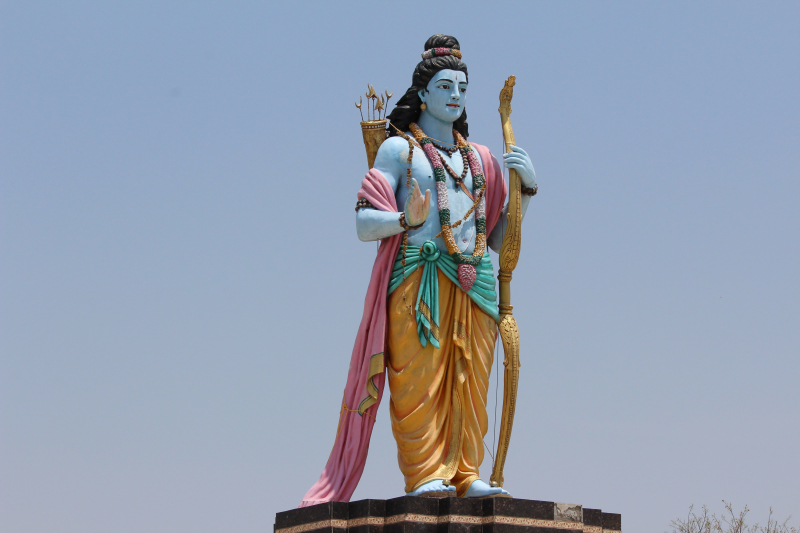
Photo by Pavan Kumaar on Unsplash -
Dhareherdu is a unique and meaningful tradition in Kannada weddings. At its core, it signifies the coming together of the bride and groom, the acceptance of their union by both families and the profound blessings bestowed upon the couple. This beautiful ceremony reflects the strong family bonds and spiritual depth that define Kannada culture.
The bride's right hand is placed upon the groom's right hand, signifying their commitment to stand by each other in their journey through life. Atop their joined hands rest a betel leaf and a coconut, both laden with symbolism. The betel leaf, with its fresh green color, represents new beginnings, while the coconut, with its hard exterior and sweet inner fruit, symbolizes the strength and sweetness of the marital bond.
The ceremonial pouring of holy water over the betel leaf and coconut is one of Dhareherdu's most profound events. This water is often obtained from the holy Ganges river, also known as dhara, which stands for cleanliness and spiritual holiness. This gesture expresses the parents' consent and sincere blessing as they entrust the groom and his family with their daughter. It is a significant act that shows how much they care about their daughter and have faith in her future.
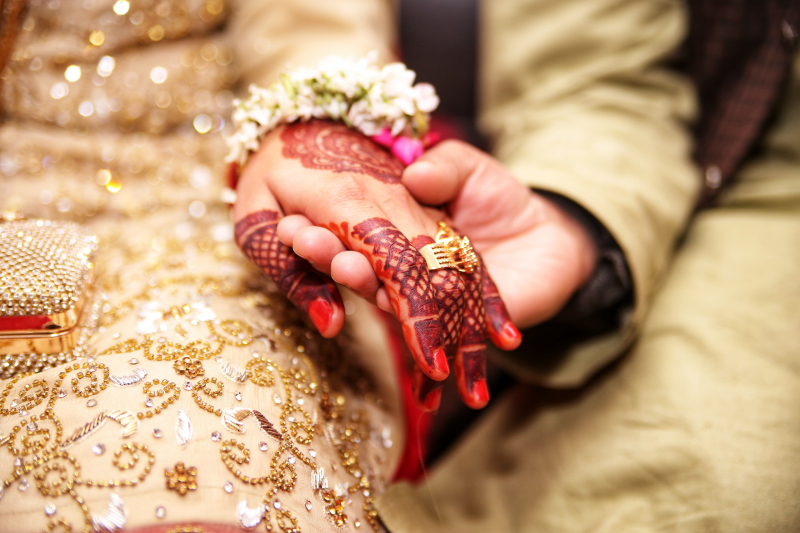
Photo by Khadija Yousaf on Unsplash 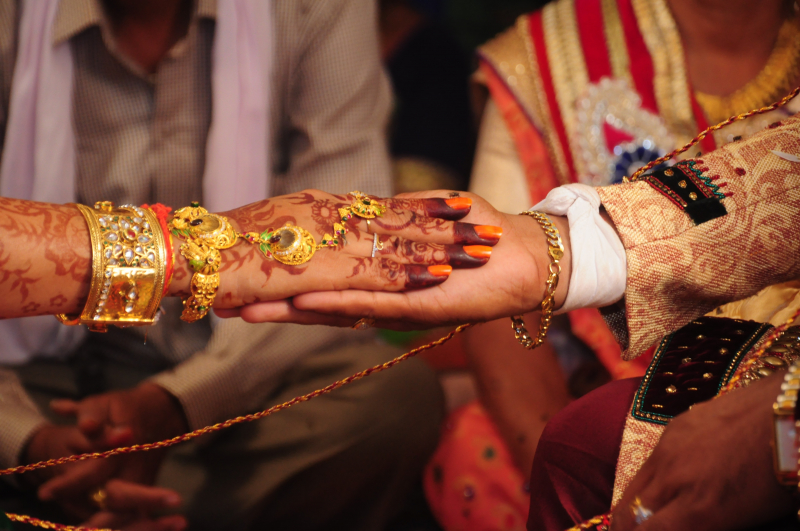
Photo by Jayesh Jalodara on Unsplash -
The Saptapadi ritual begins with a unity gesture. The groom's scarf is attached to the end of the Kannada bride's outfit, which is frequently the Pallu of her saree. This knot, known as the "Mangalsutra," represents the couple's unbreakable link as they go through life together.
Following the Mangalsutra ritual, the couple travels on a holy path together while seven times circling the sacred fire (agni). The name of this ceremony is Saptapadi. They do this symbolic act to symbolize the seven vows they make to one another as husband and wife. The holy fire is revered as a source of holiness and spiritual power as well as a testament to their vows.
As the couple circumambulates the sacred fire, they exchange seven vows, each one symbolizing an essential aspect of married life. These vows are meant to be the guiding principles that will hold their marriage together, through every joy and challenge that life may bring. Once the Saptapadi is complete, the couple takes their seats, with the bride seated on the groom's left. This placement symbolizes their equality and shared responsibilities in their marriage. It signifies that they will stand by each other's side, supporting and complementing each other in their journey together.

Photo by Sean Williams on Unsplash 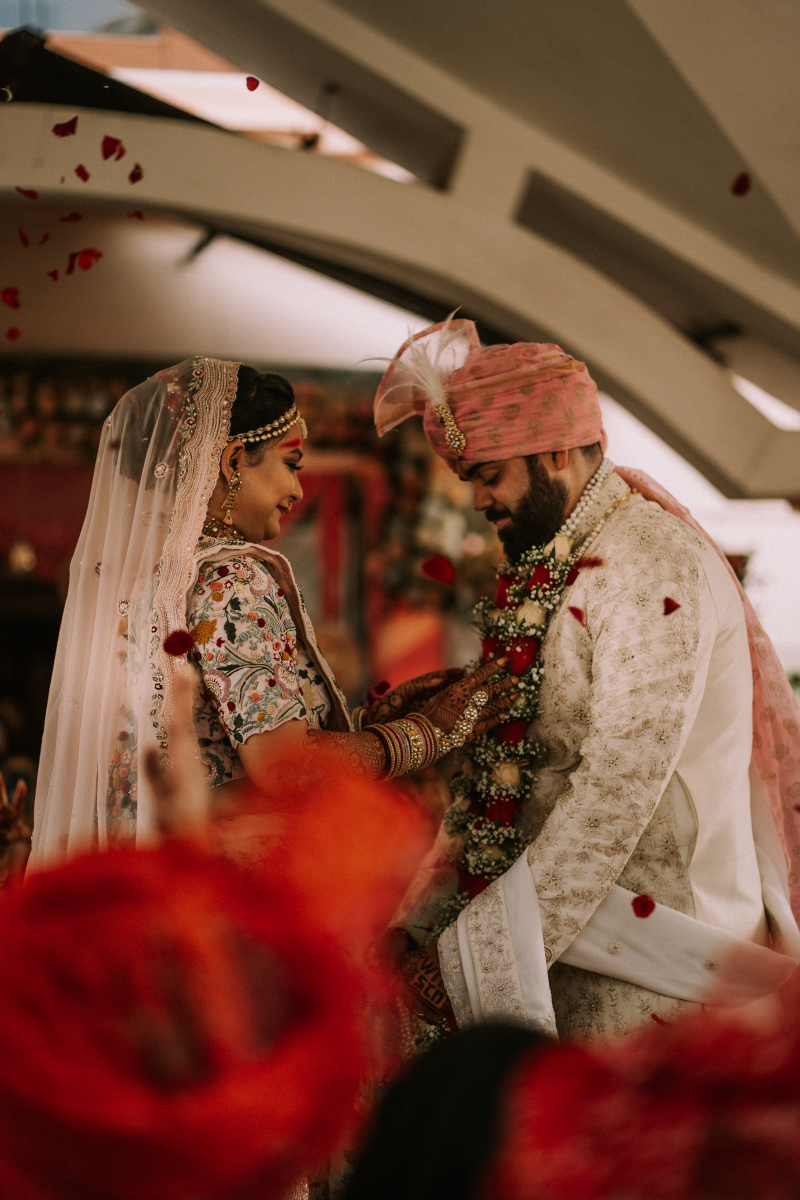
Photo by Rupinder Singh on Unsplash -
The Thaali ceremony is the ultimate declaration of marital commitment in Kannada weddings. This sacred ritual involves the bride and groom, now dressed in their wedding attire, coming together in the presence of their loved ones to exchange vows and seal their union with the Thaali, also known as the Mangalsutra. This necklace, often made of gold or other auspicious materials, is symbolic of the unbreakable bond that marriage represents.
Central to the Thaali ceremony are the blessings and support of experienced married women. Five married women surround the bride during this ceremony, representing the collective wisdom and marital experiences of generations. These women play a pivotal role in ensuring the smooth execution of the ritual.
In the Thaali ceremony, it is the groom who takes the lead. With the support and guidance of the married women and the priest, he lovingly places the Thaali around the bride's neck, fastening it securely. This act signifies his commitment to protect, cherish, and support his bride throughout their journey of life together. As the groom ties the Thaali around the bride's neck, the couple officially becomes husband and wife. This act signifies the beginning of their life together as a married couple, and it is met with joy and blessings from their families and guests.
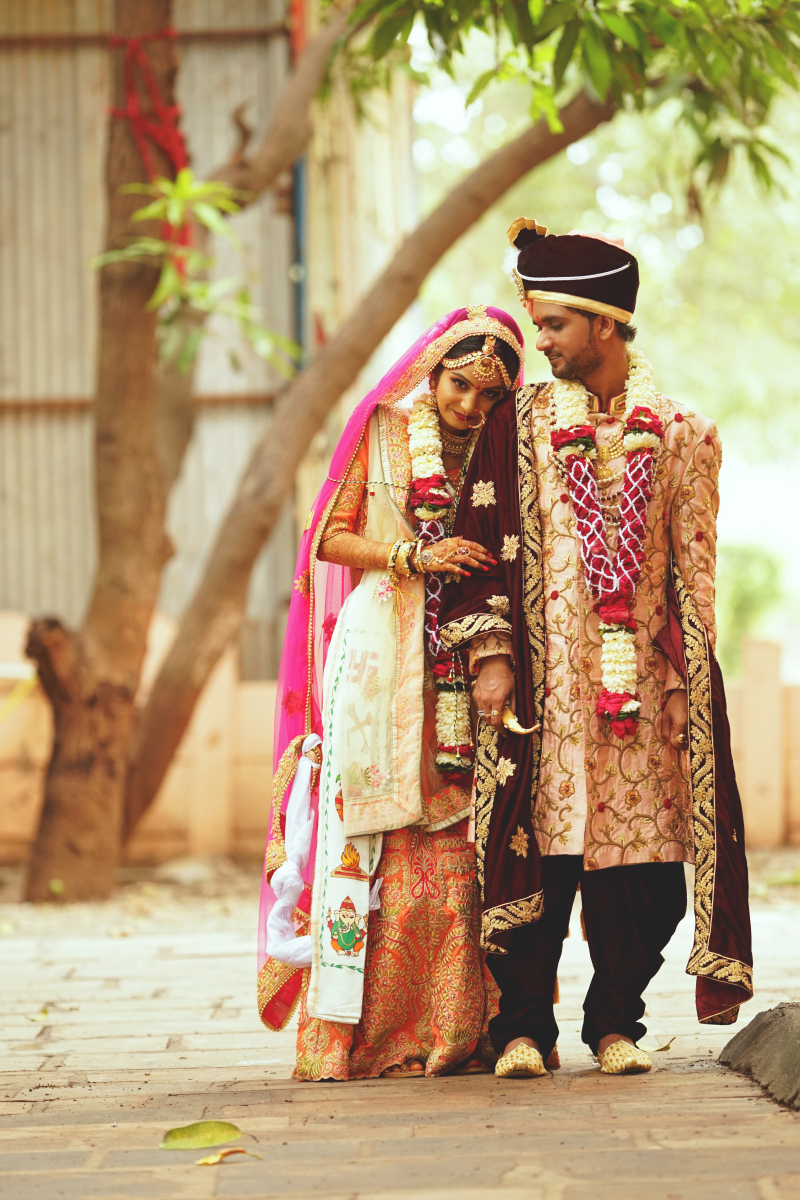
Photo by Kaushal Moradiya on Pexels 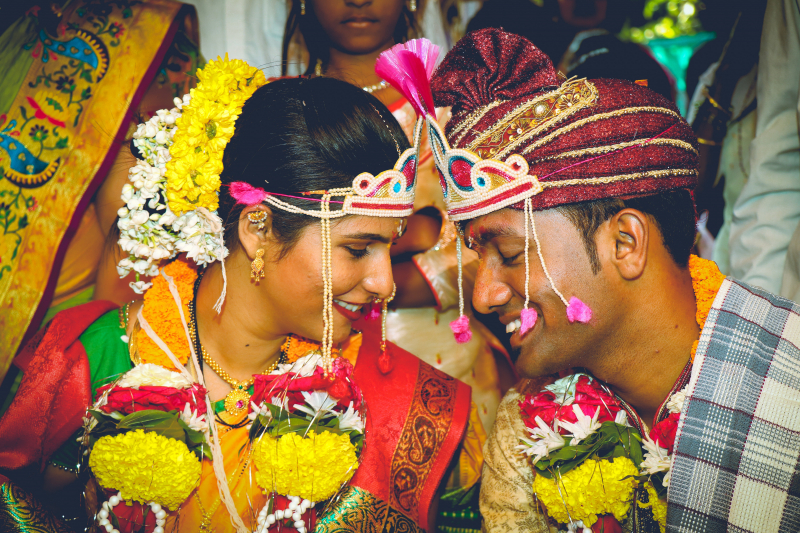
Photo by 🇮🇳Amol Nandiwadekar on Pexels -
The Arundhati Nakshatra, often known as "Arundhati Star", has a unique significance in Kannada weddings. It symbolizes a special time when the couple walks outside, usually on the grounds of the wedding location, to look up at the stars. Finding and concentrating on the Arundhati Nakshatra, a particular star linked to marriage happiness and success, is the goal. Arundhati and the sage Vashishta were renowned for their passionate devotion, dedication, and satisfaction. It is said that the Arundhati Nakshatra represents their perfect married life.
The act of stepping out together, hand in hand, and gazing at the starlit sky is a representation of the couple's journey into the future. The star's light, as witnessed by both bride and groom, signifies the shared path they will walk together in their marriage. It represents the hope and optimism they carry as they embark on their life's journey together.
Arundhati Nakshatra is not just about seeking blessings; it is about acknowledging the importance of happiness and prosperity in married life. The star serves as a guiding light, reminding the couple that even in the darkest of nights, love, harmony, and prosperity can shine through. Arundhati Nakshatra is also a time when the bride and groom are reminded of their love and commitment to one another.

Photo by Prateek Katyal on Unsplash 
Photo by Asad Photo Maldives on Pexels -
The Name Change Ceremony in Kannada weddings is an embodiment of a fresh start in the marital journey. It takes place after the wedding, often in the days following the Saptapadi, the ritual of taking seven steps together. At this juncture, the groom takes the initiative to give his bride a new name, symbolizing her role as his partner and the beginning of a shared life.
The groom is provided with a plate filled with rice, a symbol of prosperity and abundance. Using his ring, he writes the chosen name for his bride onto the plate of rice. This act signifies his love and commitment towards her, as he embraces her as his life partner.
The bride, in this beautiful and significant moment, accepts the new name bestowed upon her by the groom. By taking the plate from him, she symbolizes her acceptance of her new identity as his wife and life partner. It is a gesture that reflects her willingness to start this new phase of life with him and her trust in their future together. The Name Change Ceremony is not just about altering a name; it signifies the beginning of a shared journey where two individuals unite to form a strong and loving partnership.
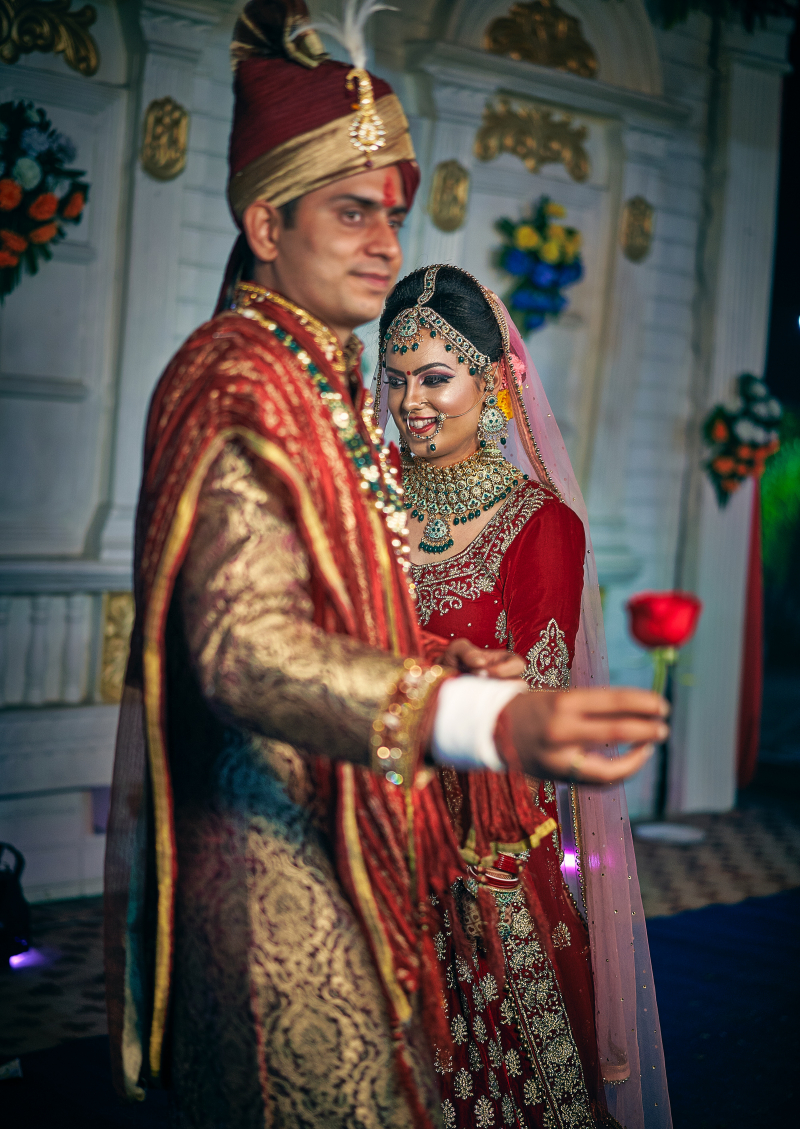
Photo by Ashwini Chaudhary(Monty) on Unsplash 
Photo by Ajay Donga on Pexels













